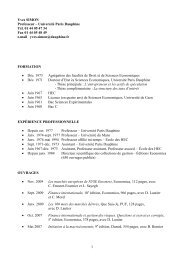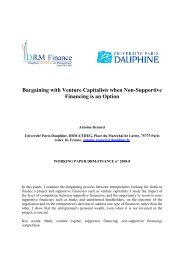Corporate governance and earnings management ... - CEREG
Corporate governance and earnings management ... - CEREG
Corporate governance and earnings management ... - CEREG
You also want an ePaper? Increase the reach of your titles
YUMPU automatically turns print PDFs into web optimized ePapers that Google loves.
most popular means of funding the investment (Hannah, 1983, p. 62; Wilson, 1995, p. 129-<br />
130). If we add that British banks went on pursuing a conservative <strong>and</strong> liquidity conscious<br />
strategy it is easy to underst<strong>and</strong> why the traditional “weakened static” solution initiated by<br />
Dicksey could have been so long successful: both self financing family owners <strong>and</strong> prudent<br />
bankers could only been pleased with such a solution! This de facto alliance between creditors<br />
<strong>and</strong> long-term investors was particularly acute during the inter-war years, as it has been<br />
stressed by Edwards (1989, p. 138) <strong>and</strong> Maltby (2000), but it has had very long consequences<br />
as far goodwill is concerned. Of course as soon as the 1970s, <strong>and</strong> the rise of the financial<br />
capital, the British economy became a kind of dualistic economy with the persistence of the<br />
traditional family firm <strong>and</strong> the rise of international giants financed by external capital. This<br />
explains why as soon as 1980, at the time of discussion of SSAP 22, in the early 1980s, there<br />
was a clash between the proponents of the “weakened static view” <strong>and</strong> the tenants of the<br />
dynamic approach. With the era of the takeover bids (second half of the 1980s) <strong>and</strong> the<br />
necessity to inflate the balance sheets in order to avoid the predators, the static solution<br />
became more <strong>and</strong> more problematic for many British giants. This plus the influence of the<br />
dominant international solutions of the time may well explain why the dynamic solution<br />
emerged in the 1990s. In spite of the fact that, as Armour et al. (2003, p. 22) underline it, the<br />
provisions of European Community Directives could be “a major countervailing force to<br />
shareholder primacy”, the main fact is that in 2002 a large majority (74%) of UK CFOs say<br />
that companies are eager to apply the IAS before 2005, presumably because UK has a strong<br />
capital market (Holgate & Gaul, 2002). In the same sense Paterson noted that if “a charge for<br />
goodwill amortization is not of great interest to the City, having to adjust the target’s net<br />
assets to fair value is more significant” (2001, p. 98).<br />
4.4. Germany<br />
Germany has been the country were the (pure or weakened) static solutions have been the<br />
longer to disappear. This is not astonishing: up to a recent period, say the mid 1990s, the<br />
63



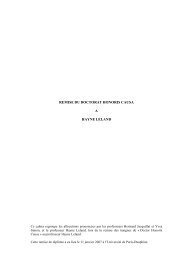

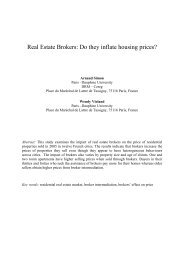
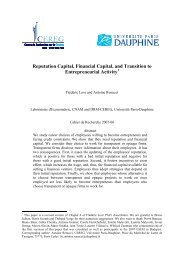

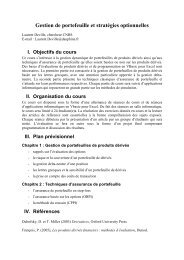



![& 6 ] ^ F ]^ - CEREG - Université Paris-Dauphine](https://img.yumpu.com/33326502/1/184x260/-6-f-cereg-universitac-paris-dauphine.jpg?quality=85)

